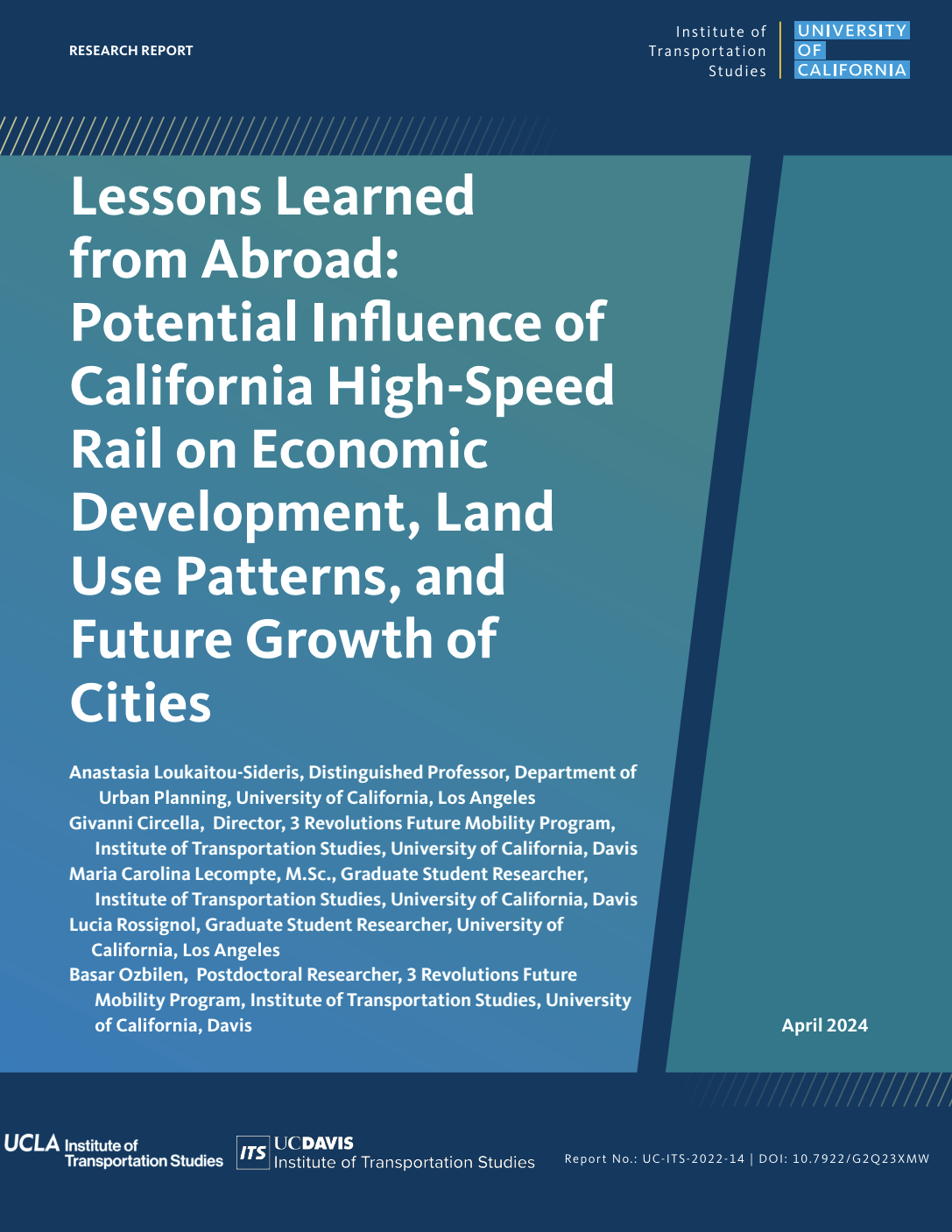Date: April 1, 2024
Author(s): Anastasia Loukaitou-Sideris, Giovanni Circella, Maria Carolina Lecompte, Lucia Rossignol, Basar Ozbilen
Abstract
This study discusses the potential economic and development impacts that high-speed rail (HSR) may bring to California. The research reviews the reported impacts of HSR implementation in various countries, particularly in Europe, and case studies of selected HSR station-cities in France, Spain, and Italy. The analysis suggests that HSR could bring economic development to the state and stimulate population growth but might eventually lead to gentrification in certain locations. Not all station-cities experience the same impacts, and certain conditions may foster greater economic development. Station location and connectivity to downtown areas would be particularly important in influencing these impacts, while peripheral stations would be less able to attract land use development and relocation of activities. The availability of rail service to larger cities (and connections to other major markets) and the coordination with urban planning and policy are key to determining the development of areas around HSR stations. The study indicates that for HSR to bring about desired economic development, the planning and design of stations and services must be integrated with the vision and urban plans of each station-city.
About the Project
New transportation networks facilitate mobility and may also spur economic development. Over the past decades, a new transportation technology — high-speed rail (HSR) — has brought a profound impact on urban-regional accessibility and intercity travel across Europe and East and South-East Asia. But the economic and spatial impacts of HSR have been varied and are largely contingent on a variety of factors, as well as local planning and policy. As California is in the process of building its own HSR network, it is important to review the experience of established HSR networks abroad and understand the possible economic effects that HSR can bring to regional and local economies, and their prerequisites. While the impacts of California’s plan on the direct creation of jobs in local markets (e.g., construction sector) and on the travel sector (e.g., forecasts for HSR travel demand) have been investigated, the possible indirect impacts (e.g., on land values, tourism, firm location, and local and regional development) have not gathered enough attention. This research proposal attempts to fill this gap.


